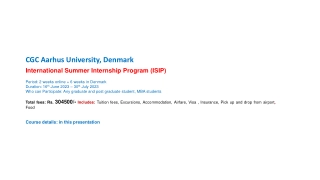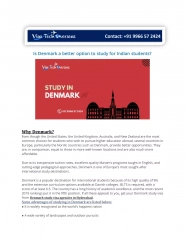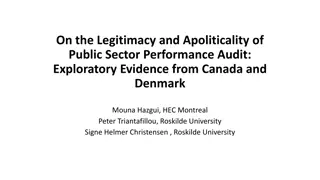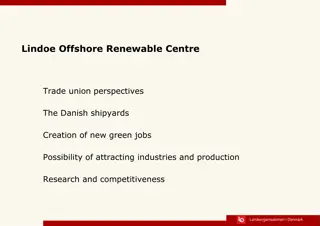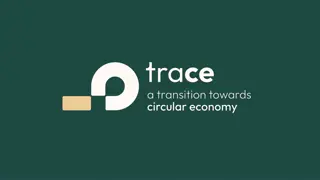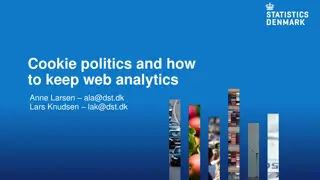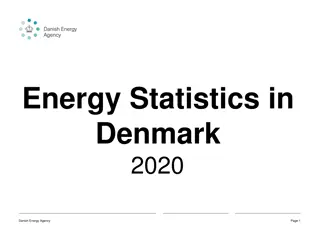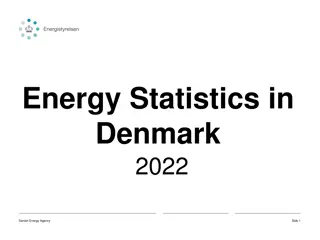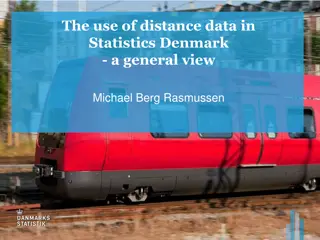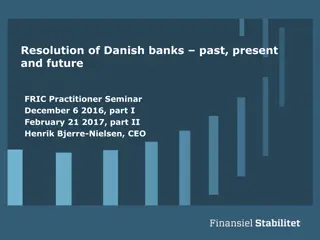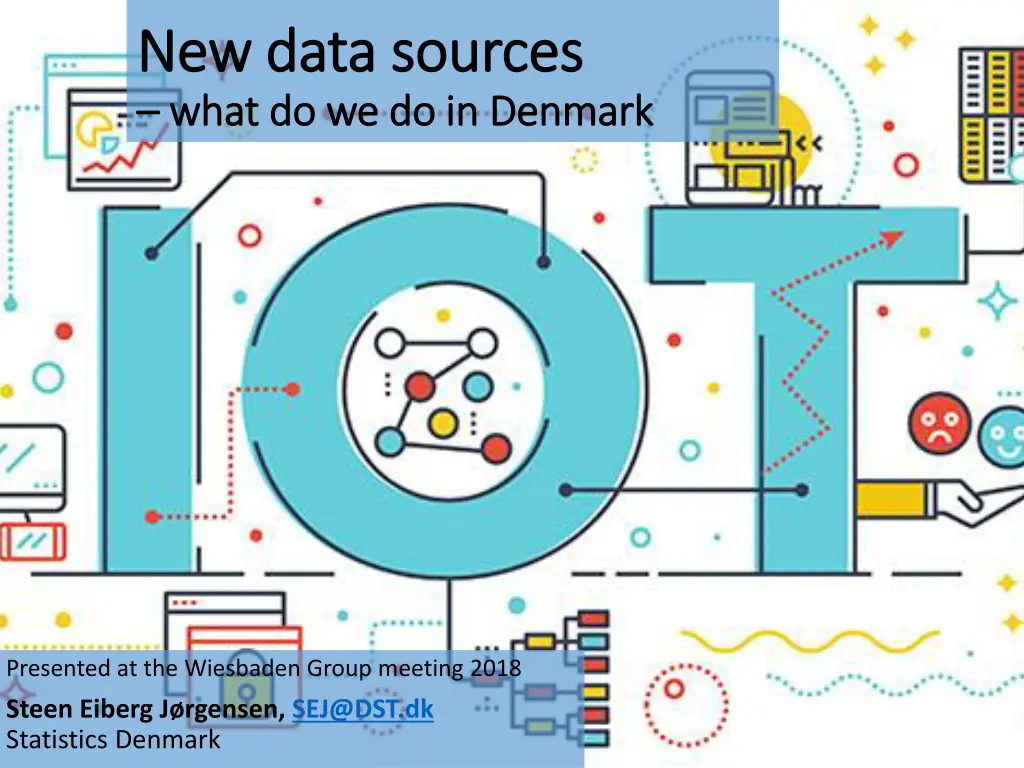
Innovation and Digitisation Trends in Denmark
Explore the innovative approaches and digitisation trends in Denmark, focusing on reducing workload, enhancing data collection methods, and the rise of new digital enterprises. Learn how Statistics Denmark is involved in improving data quality, response rates, and efficiency, along with the shift towards digital transformation and automation opportunities in the country.
Download Presentation

Please find below an Image/Link to download the presentation.
The content on the website is provided AS IS for your information and personal use only. It may not be sold, licensed, or shared on other websites without obtaining consent from the author. If you encounter any issues during the download, it is possible that the publisher has removed the file from their server.
You are allowed to download the files provided on this website for personal or commercial use, subject to the condition that they are used lawfully. All files are the property of their respective owners.
The content on the website is provided AS IS for your information and personal use only. It may not be sold, licensed, or shared on other websites without obtaining consent from the author.
E N D
Presentation Transcript
New data New data sources what do we do in Denmark what do we do in Denmark sources Presented at the Wiesbaden Group meeting 2018 Steen Eiberg J rgensen, SEJ@DST.dk Statistics Denmark
Why business case Focus on reducing the workload From the government From the industry organisations From the enterprises Why is Statistics Denmark involved? Faster data Improved quality Reduced data processing costs Higher response rates Larger samples and more data 2
Data collection Data collection - - Need for change: Reduced workload + More efficient Need for change: Reduced workload + More efficient production + New statistical production + New statistical products products Up till now: Digitalise Data Collection ( 1:1 ) The way ahead: Transform Data Collection ( N:M ) From paper surveys to digital surveys and 1:1 System-to-system Find relevant data where it is - and use it, all? Flexibility and adaptability Fast-paced technological development and new sources Voluntary win-win partnerships vs. slow-paced legislation Diverse coverage vs. conventional sampling Same Adapted production systems Maximise Automation if the business case is good Key partnerships - for coverage, stability and few systems New tools and data collection systems New digital functionality for reduced 1:1 workload Generic standards and systems across providers - and NSIs? For receiving and storing data For data processing: Machine learning, Big data analysis For documenting data compiled from diverse sources Legislation on new modes for same tasks and same units Flexible use of data Prefill fields > Shorten questionnaires > Replace surveys Use extra data for new processes and new products
Digitisation trends Digitisation trends Digital transformation Systems go online and become standardised Data is born digital, e.g. on home pages Data is processed digitally, e.g. via apps Data is stored in the cloud and shared between systems The situation for newly established SMEs Operating a business should be easy No interest in administrative tasks Data is willingly shared if it eliminates an administrative task 4
New digital enterprises New digital enterprises Enterprises are started digitally Create a company in five minutes Standard articles of association, standard charts of accounts, NemID And continue to operate digitally 300,000 active enterprises in Denmark 200,000 use online accounting systems typically SMEs Five significant operators in the market One dominant operator The development creates automation opportunities 5
Levels of automation Levels of automation Level 5 A central supplier provides the NSI with comprehensive data from all enterprises Level 5: Digital partnerships with central suppliers of data structured or unstructured ERP systems are adapted to automatically transfer data to the NSI. Data is approved by the enterprise. Level 4 Level 4: Automatic report ERP systems are adapted to facilitate transfer of data to the NSI. Data is approved by the enterprise. Level 3 Levels 2-3: Semi-automatic report An app exports data from internal business systems. Data is validated and approved by the enterprise. Level 2 Level 1: Manual file upload The enterprise exports data from the internal business system. The data file is uploaded with/without validation at source. Level 1 Enterprise enters data into digital questionnaire or app questionnaire. Data validated and approved by the enterprise. Baseline 6
Status in Statistics Denmark Status in Statistics Denmark Use of big data Accounting statistics XBRL data Statistics on agriculture satellite data Library statistics Tests and voluntary agreements on data deliveries Provider of accounting systems Data on transport and goods on vehicle Data on farming, e.g. harvest, forest areas and pigs Monthly turnover in retail businesses 7
Clarification issues Clarification issues How can we automate? Do external suppliers take an interest in contributing to and (co-)financing the automation? Is there great diversity in the (online) systems applied by the enterprises? Should enterprises subject to reporting duty give the central operator power of attorney authorising him to make the reporting? Does the law authorise dowloading of data from central operators? Are central operators allowed to submit information to SD on behalf of enterprises that are not subject to a reporting duty? Are the central operators willing to enter into voluntary partnerships? 8
Consequences of automation Consequences of automation Risks Higher degree of customisation Raw data may be less accurate Reduced quality assurance in the reporting situation Opportunities Increased amounts of data reduce the requirement for accuracy Machine learning can patch up incomplete information Improved dialogue with reporting offices due to reduced workload 9
The way forward The way forward Externally: Automatic business reporting App for the retail sales from Economics (an online-based accounting system) Data on harvest etc. from SEGES Data on pigs from Cloudfarms Data on transport of goods by lorry from Tungvognsspecialisten (a heavy goods vehicle specialist advisor) Felling data from Hedeselskabet (the Danish Land Development Service) etc. (or satellite data?) Externally: Active search for potential partners using selected statistics or data Internally: Inspirational catalogue about the use of new data types Prefilling Troubleshooting Statistics Internally: Many small buckets ? Shared bucket ? Organisation Central unit/ central or decentralised competencies? Data secure processes and complete overview A (large) bucket for storage 10
Why do they want to Why do they want to join join - - Libraries Libraries? ? SD credibility as a data processor Reduced workload Access to own data LIB N LIB 1 LIB 2 LIB 3 LIB 4 Management information Common library system The Danish Library Association official statistics Statistics Denmark Tables return to LIB 1, 2, .. Lending Public zone E-books etc. movies Metadata Danish library service 11
How they joined: Live music 1st meeting 2nd meeting 3rd meeting 4th meeting Presentation and discussion of wishes Presentation of purpose and content Purpose and content Discussion of draft Statistics Denmark s registers Discussion of potential registers Discussion of drafted tables Presentation of statistics tables Discussion of drafted tables Presentation of statistics tables External sources Presentation of complete method memo Method memo 12
Tak Gracias Merci Dank Thanks Grazie Grazie Steen Eiberg Steen Eiberg J rgensen J rgensen, SEJ@DST.dk , SEJ@DST.dk 13



